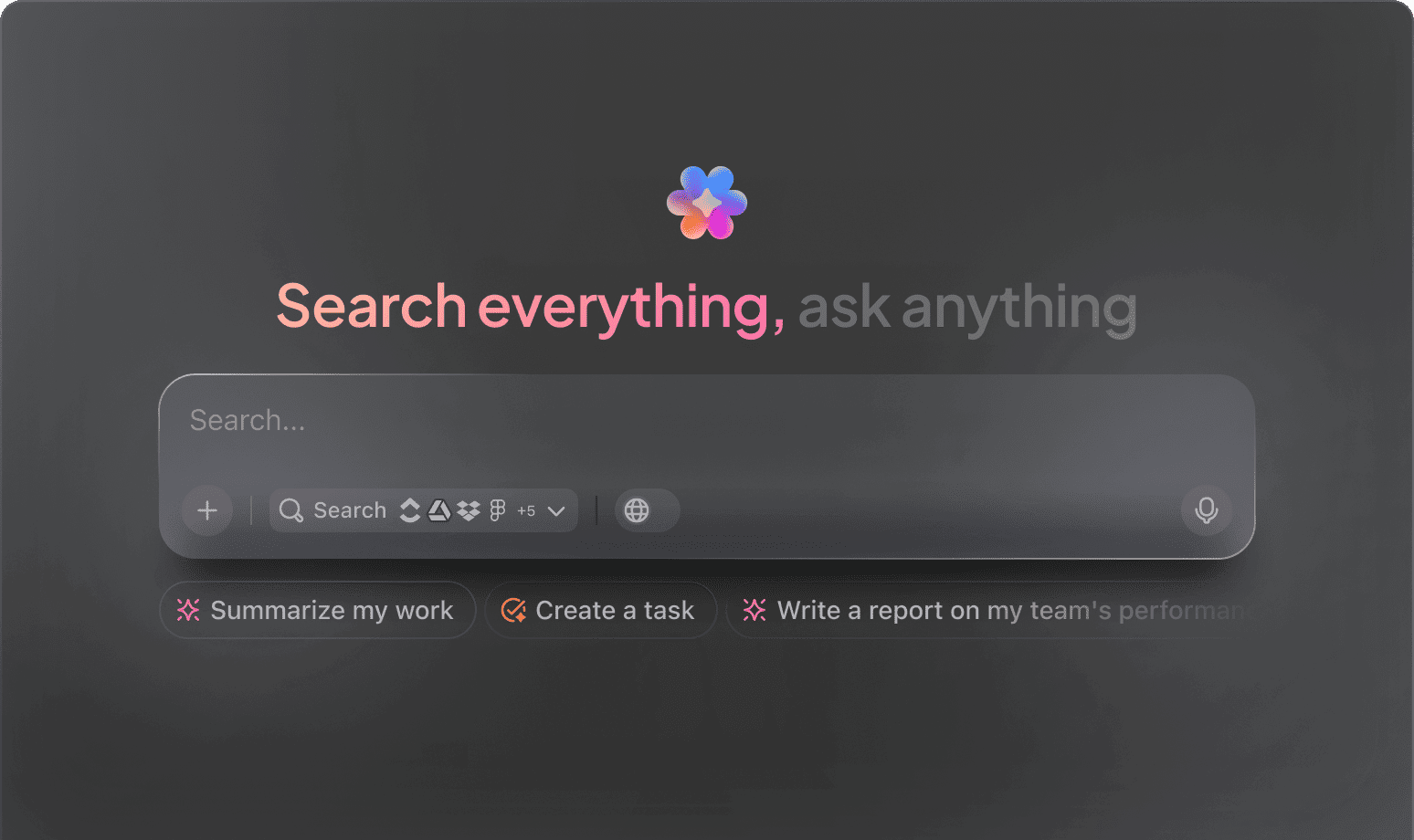AI Exploratory Data Analysis
Top AI Prompts for Exploratory Data Analysis
Unlock insights, simplify complex datasets, and accelerate your data exploration with ClickUp Brain.
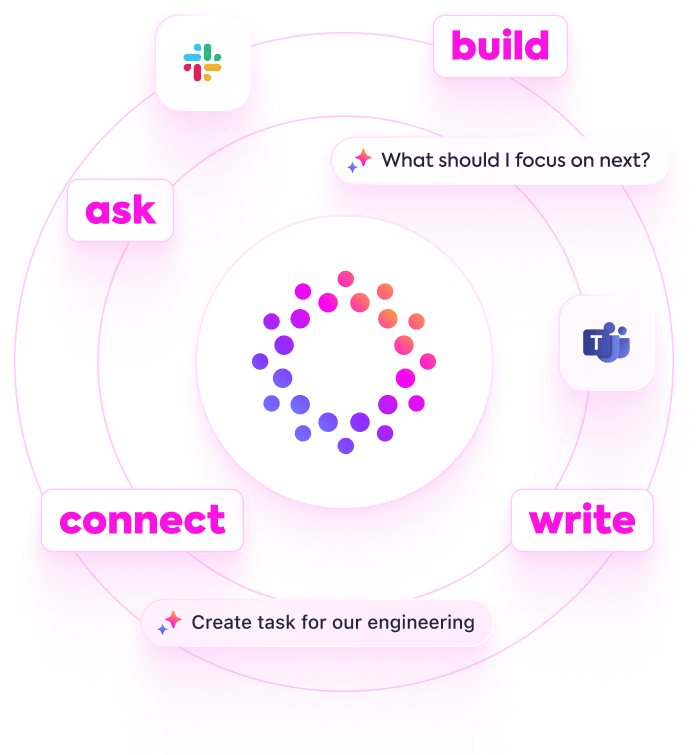
Trusted by the world’s leading businesses
AI Empowering Data Exploration
Revolutionizing Exploratory Data Analysis with AI Prompts in ClickUp Brain
Exploratory Data Analysis (EDA) is the foundation of insightful data-driven decisions.
From initial data cleaning to uncovering patterns, spotting anomalies, and preparing datasets for modeling, EDA demands meticulous attention and coordination across teams. AI prompts are reshaping how analysts and data scientists tackle these challenges.
With AI integrated into your workflow, you can:
- Quickly identify key trends and correlations within datasets
- Generate summaries and visualizations from raw data effortlessly
- Translate complex statistical outputs into clear, actionable insights
- Transform scattered notes into structured reports, checklists, or project tasks
By embedding AI capabilities directly into familiar tools—like documents, whiteboards, and task boards—solutions like ClickUp Brain empower teams to convert exploratory findings into organized, impactful actions.
Comparing ClickUp Brain with Conventional Solutions
Why ClickUp Brain Stands Apart
ClickUp Brain integrates seamlessly with your workflow, understands your context, and empowers you to focus on insights instead of explanations.
Conventional AI Platforms
- Constantly toggling between apps to collect data
- Reiterating your analysis objectives repeatedly
- Receiving generic, irrelevant suggestions
- Hunting through multiple platforms for datasets
- Interacting with AI that lacks initiative
- Manually switching between different AI models
- Merely an add-on in your browser
ClickUp Brain
- Instantly accesses your projects, notes, and team communications
- Retains your exploratory data analysis goals and past queries
- Provides insightful, context-aware recommendations
- Offers a centralized search across all your resources
- Supports voice commands with Talk to Text
- Automatically selects the optimal AI model: GPT, Claude, Gemini
- Dedicated desktop applications for Mac & Windows optimized for performance
Exploratory Data Analysis Prompts
15 Powerful AI Prompts for Exploratory Data Analysis (Validated in ClickUp Brain)
Accelerate your data exploration—insights, patterns, and validation simplified.

Identify 5 key trends in the dataset related to customer churn, referencing the ‘Q1 Customer Data’ document.
Use Case: Quickly uncovers patterns impacting retention.
ClickUp Brain Behaviour: Analyzes linked data summaries to highlight significant churn indicators.

What are the most common missing data points in the sales records for 2023?
Use Case: Supports data cleaning by pinpointing gaps.
ClickUp Brain Behaviour: Extracts and summarizes missing value statistics from internal datasets; enhanced with external benchmarks if available.

Generate a concise report outlining the distribution of key variables in the ‘Marketing Campaign Results’ dataset.
Use Case: Aligns analysts on variable characteristics and data quality.
ClickUp Brain Behaviour: Pulls relevant statistics and textual insights from linked files to create a structured overview.

Compare sales performance metrics between Region A and Region B using the ‘Regional Sales Q2’ document.
Use Case: Enables side-by-side evaluation without manual calculations.
ClickUp Brain Behaviour: Extracts tabular data and narrative summaries to produce a clear comparative analysis.

List top 5 outlier detection methods applied in recent financial datasets, referencing R&D notes and methodology documents.
Use Case: Guides selection of appropriate anomaly detection techniques.
ClickUp Brain Behavior: Scans internal documents to identify frequently used methods and their effectiveness notes.

From the ‘Data Quality Checks’ document, create a checklist for validating dataset integrity.
Use Case: Simplifies quality assurance with a ready-to-use task list.
ClickUp Brain Behavior: Identifies validation criteria and formats them into a structured checklist within a task or document.

Summarize 3 emerging visualization techniques for multivariate data from recent analytics research.
Use Case: Keeps data presentations innovative and insightful.
ClickUp Brain Behavior: Extracts key trends and recurring themes from linked research papers and notes.

From the ‘User Behavior Survey 2024’ document, summarize main preferences for dashboard layouts.
Use Case: Helps design teams tailor interfaces to user expectations.
ClickUp Brain Behavior: Analyzes survey data to identify common design preferences and feedback patterns.

Write clear and engaging tooltip text for a correlation heatmap, using the style guide in ‘DataVizTone.pdf’.
Use Case: Speeds up UI content creation while maintaining brand voice.
ClickUp Brain Behavior: References tone guidelines to suggest varied, user-friendly tooltip options.

Summarize recent changes in data privacy regulations affecting EDA workflows.
Use Case: Ensures compliance during data analysis phases.
ClickUp Brain Behavior: Condenses linked compliance documents; Brain Max can incorporate public updates if available.

Generate guidelines for anonymizing sensitive fields in customer datasets, referencing GDPR compliance documents.
Use Case: Supports secure data handling practices.
ClickUp Brain Behavior: Extracts rules and best practices from internal docs to form a clear anonymization checklist.

Create a checklist for validating data transformations in the ‘Sales Data Pipeline’ folder.
Use Case: Helps data engineers ensure accuracy before modeling.
ClickUp Brain Behavior: Identifies transformation steps and validation criteria from documents, organizing them by process stage.

Compare feature selection techniques used in recent predictive modeling projects, based on internal analysis reports.
Use Case: Supports method benchmarking and informed decision-making.
ClickUp Brain Behavior: Summarizes documented approaches into an easy-to-digest comparison table or brief.

What are the latest trends in automated EDA tools since 2023?
Use Case: Provides R&D teams with insights on evolving automation capabilities.
ClickUp Brain Behavior: Synthesizes trends from internal research notes, product summaries, and uploaded industry reports.

Summarize key usability issues reported in the ‘Data Analyst Feedback’ folder regarding current EDA dashboards.
Use Case: Drives targeted improvements based on user experience.
ClickUp Brain Behavior: Extracts and prioritizes feedback themes from survey responses, notes, and tagged tickets.
Accelerate Your Data Insights with ClickUp Brain
Cut down repetitive tasks, unify your analytics team, and unlock deeper findings through AI-enhanced workflows.





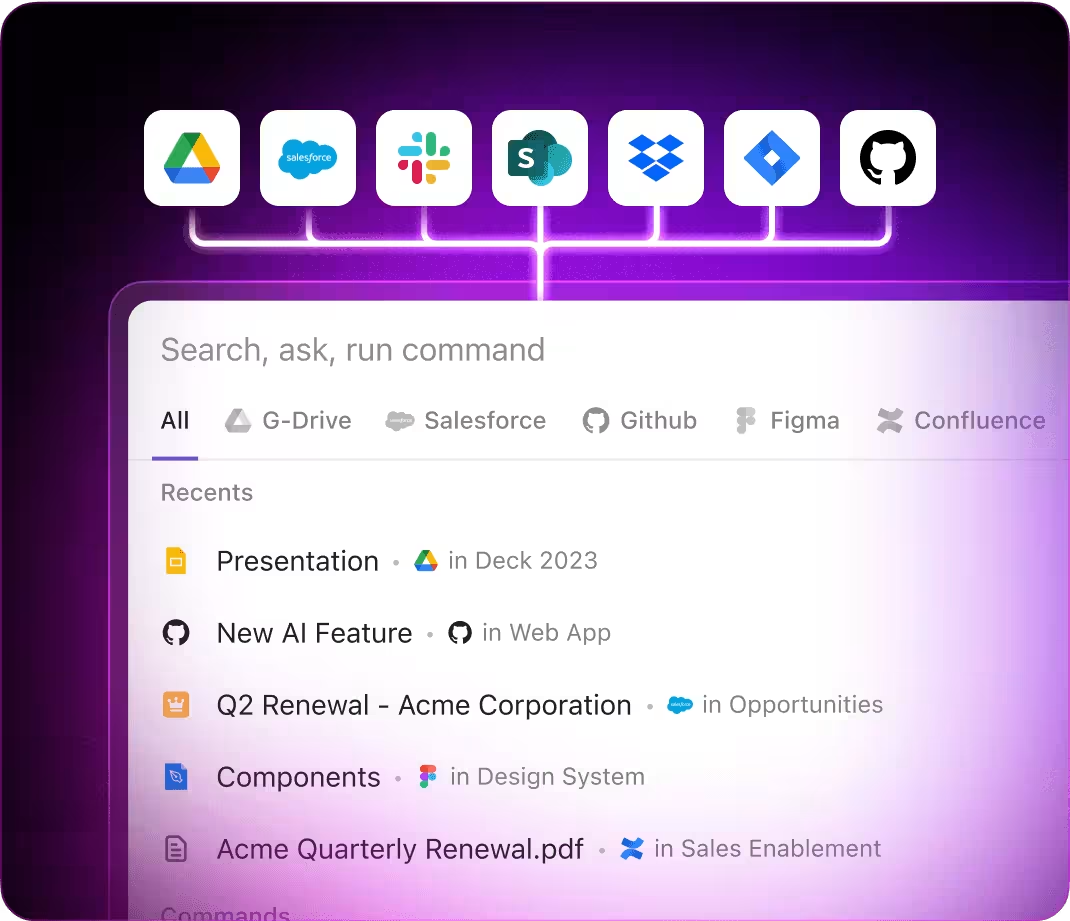
AI Applications
Key Ways AI Prompts Enhance Exploratory Data Analysis with ClickUp Brain
Speed up insights, boost data accuracy, and discover new patterns effortlessly using AI-driven prompts in ClickUp Brain.
From Raw Data to Insightful Reports
Exploratory data analysis starts with piles of unorganized numbers and unclear patterns. ClickUp Brain organizes these into clear, collaborative analysis summaries—right within ClickUp Docs.
Leverage ClickUp Brain to:
- Convert scattered data points into structured analysis frameworks
- Produce fresh hypotheses informed by previous datasets (through context-sensitive AI assistance)
- With Brain Max, instantly access historical analyses, team comments, and data visualizations to inspire your next discovery.
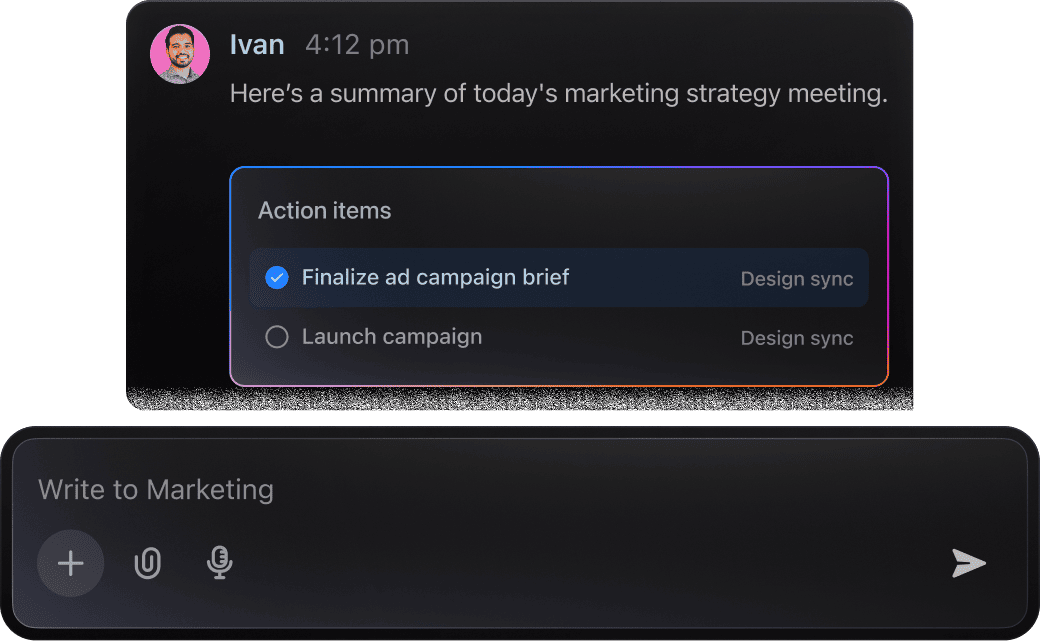
From Data to Discovery
Data analysts often face overwhelming datasets and scattered insights. ClickUp Brain empowers you to uncover key trends, identify anomalies, and generate actionable findings from your exploratory data analysis.
Leverage ClickUp Brain to:
- Condense complex data observations documented in tasks or Docs
- Convert raw analysis notes into prioritized follow-up investigations
- Compose clear summaries of data patterns or hypothesis tests effortlessly
- With Brain Max, instantly retrieve past analysis results, variable comparisons, or project discussions across your workspace—eliminating tedious searches through reports.
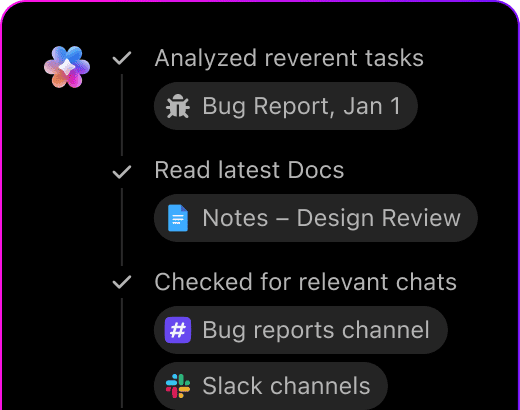
Exploratory Data Analysis with ClickUp Brain
Navigating through complex datasets requires careful examination, pattern recognition, and clear documentation. ClickUp Brain simplifies this process by extracting key findings and crafting precise analysis summaries that align with your team's style.
Leverage ClickUp Brain to:
- Distill raw data observations into clear, actionable points
- Create detailed analysis notes tailored to your project's needs
- Convert discussion threads into prioritized follow-up tasks or hypotheses
- Brain Max enhances this by effortlessly linking past analyses or related datasets, supporting thorough reviews even in extended research timelines.
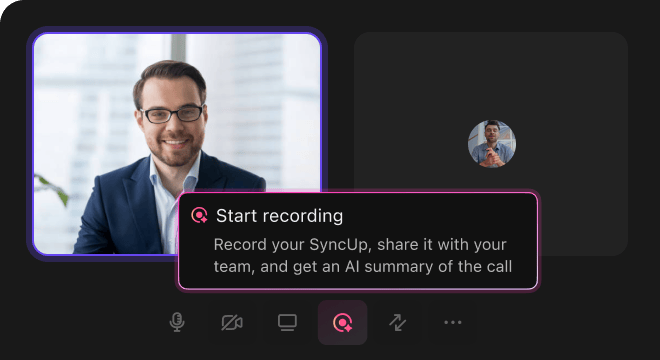
AI Advantages
How AI Prompts Revolutionize Exploratory Data Analysis
Harness AI-driven prompts to enhance every phase of your data exploration:
- Accelerate discovery: Quickly generate hypotheses, visualizations, and summaries from raw datasets
- Reduce errors: Detect anomalies and inconsistencies by cross-referencing historical analyses
- Align your team: AI-crafted reports and insights ensure everyone shares a clear understanding
- Make informed choices: Use prompts to uncover trends, risks, and compliance factors
- Innovate analysis: Push beyond standard queries to reveal hidden patterns and opportunities.
All these capabilities integrate directly within ClickUp, turning your AI outputs into actionable docs, tasks, and dashboards that drive impactful data projects forward.
Prompt Strategies
Crafting Effective Prompts for Data Exploration
Clear prompts unlock deeper insights.

Define your data analysis scenario clearly
Vague prompts yield vague results. Specify details such as dataset type (e.g., “customer sales data” or “sensor readings”), analysis goals (e.g., “identify purchasing trends” or “detect anomalies”), or timeframe (e.g., “last quarter” or “past year”).
Example: “Explore sales patterns for online retail transactions during holiday seasons.”

Use comparative prompts to uncover differences
AI excels at contrasting datasets or variables. Employ prompts like “compare X and Y” to highlight distinctions between customer segments, time periods, or product categories.
Example: “Compare monthly revenue trends between new and returning customers.”

Frame prompts around specific analysis tasks
Approach your prompt as a clear objective for AI to achieve. Instead of “Generate insights,” focus on actionable tasks:
Example: “Identify key factors influencing churn rates in subscription services.”

Specify desired output formats
Need a summary table, visualization suggestions, or step-by-step analysis? Clearly state the format to get structured responses.
Example: “Provide a bullet list of top 5 variables impacting customer satisfaction with explanations.”
Accelerate Data Discovery with ClickUp Brain
ClickUp Brain goes beyond project tracking—it's your intelligent partner for every phase of exploratory data analysis.





